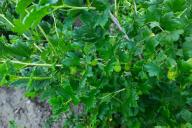In your garden, you can grow not just crops or flowers – you can also grow your own mushrooms!
For instance, you can grow honey mushrooms – they're delicious and relatively easy to grow, too.
Here are a few tips on how to do that.
Spawn Selection
Obtain honey mushroom spawn, which is the mycelium-containing material used to start the growth.
You can buy spawn online or from a garden center.

Site Preparation
Choose a suitable location in your garden.
Honey mushrooms prefer growing in wood chips, decaying logs, or composted wood materials.
Clear the area of any weeds or debris.
Inoculation
Spread the honey mushroom spawn over the prepared area.
You can mix it into the wood chips or logs, ensuring good contact between the spawn and the substrate.
Moisture and Shade
Honey mushrooms thrive in moist environments. Keep the area well-watered, especially during dry periods.
Provide some shade to protect the mushrooms from direct sunlight.
Patience
Growing honey mushrooms requires time and patience.
The mycelium will gradually spread and colonize the substrate.
This process can take several months to a year.
Maintenance
Regularly check the moisture levels of the growing area and adjust watering as needed.
Remove any competing vegetation that might hinder the growth of honey mushrooms.
Harvesting
Once the honey mushrooms start to appear, you can harvest them.
Make sure you correctly identify them to avoid any confusion with toxic mushrooms.
Cut or twist off the mushrooms at the base, leaving some behind for future growth.
Spore Spreading
After harvesting, honey mushrooms release spores that can help propagate new growth.
Allow some mushrooms to mature and release their spores naturally, aiding in the expansion of your mushroom patch.
Previously, we talked about growing apricots.








